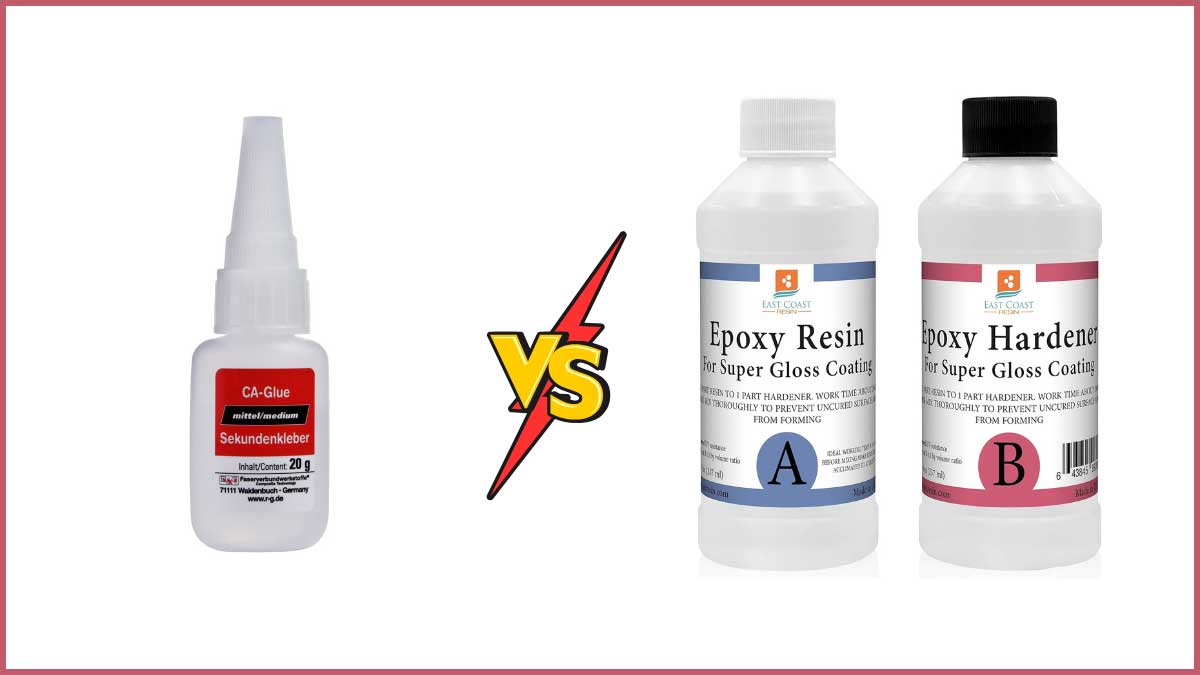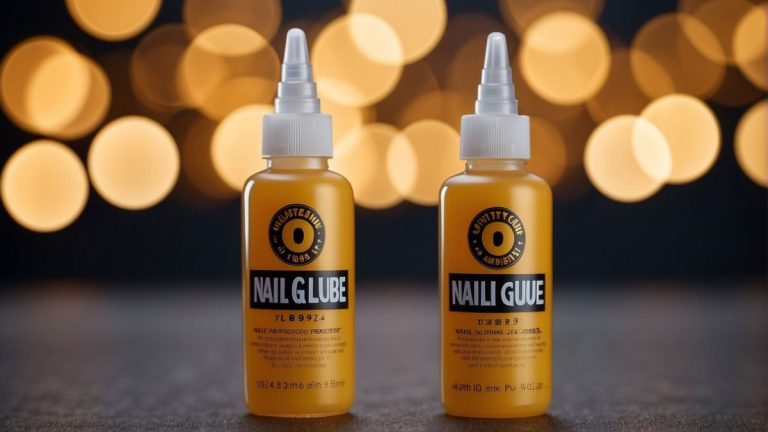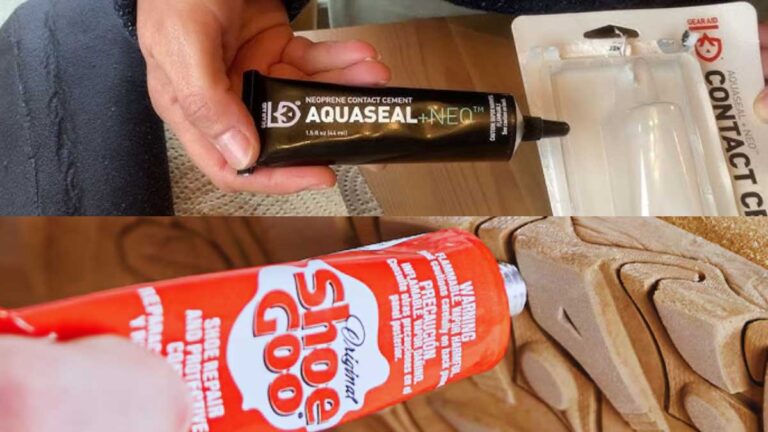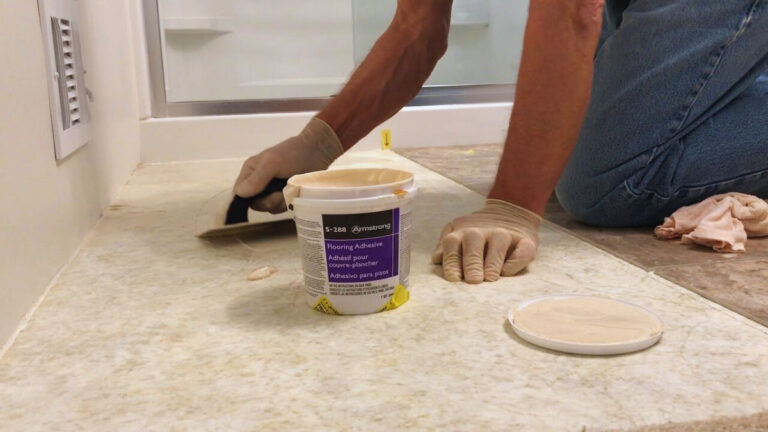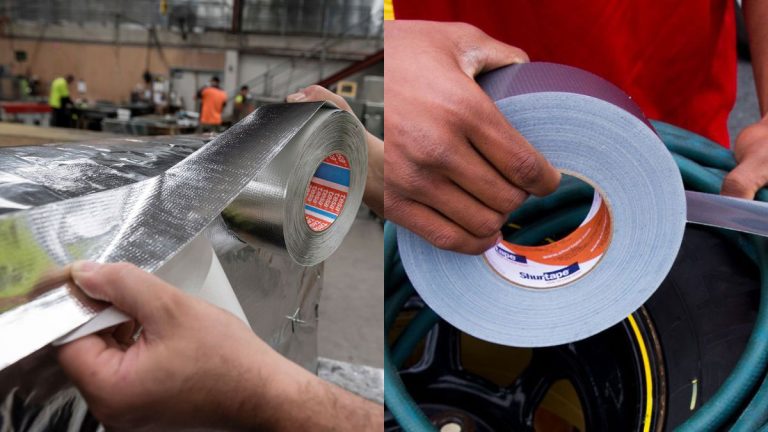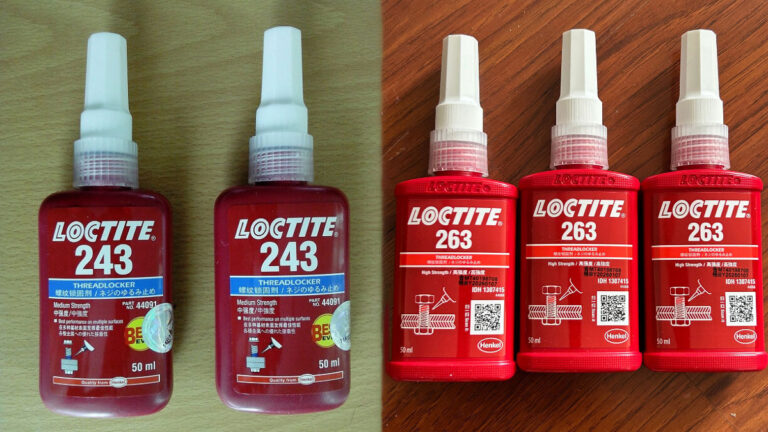CA Glue vs Epoxy: Choosing the Right Adhesive for Your Projects
When it comes to choosing the right adhesive for your project, the decision often boils down to CA glue and epoxy. Both are popular options, but they serve different purposes and have unique strengths. Understanding these differences can save you time, money, and frustration.
CA glue, also known as super glue, is renowned for its quick bonding capabilities and ease of use. It’s perfect for small, quick fixes and works best on non-porous surfaces. On the other hand, epoxy offers superior strength and durability, making it ideal for heavy-duty applications and materials that require a more robust bond. By knowing the specific advantages of each, you can make an informed choice that ensures your project’s success.
Key Takeaways
- Quick Bonding vs. Strength: CA glue, known for its rapid bonding capabilities, is ideal for quick fixes and non-porous surfaces. In contrast, epoxy offers superior strength and durability, making it suitable for heavy-duty applications and long-term use.
- Drying and Curing Times: CA glue sets within seconds, making it perfect for immediate repairs. Epoxy, however, requires mixing and takes several hours to cure, allowing for precise positioning during the bonding process.
- Material Compatibility: CA glue excels on smooth, non-porous materials like plastics and metals, while epoxy is versatile, adhering well to both porous and non-porous surfaces including wood and ceramics.
- Environmental and Safety Concerns: Both adhesives have environmental impacts and safety considerations. CA glue emits fumes and can cause skin irritation, while epoxy involves handling potentially harmful chemicals. Proper safety measures and disposal methods are essential for both.
- Cost and Availability: CA glue is generally more expensive but widely available in various viscosities for small, quick repairs. Epoxy, being more cost-effective for larger projects, is also readily accessible in hardware and home improvement stores.
- Application Specificity: Choose CA glue for fast-acting solutions in small-scale projects. Opt for epoxy for detailed projects that require robust, long-lasting bonds and can accommodate a longer curing time.
CA Glue vs Epoxy: A Comparative Analysis
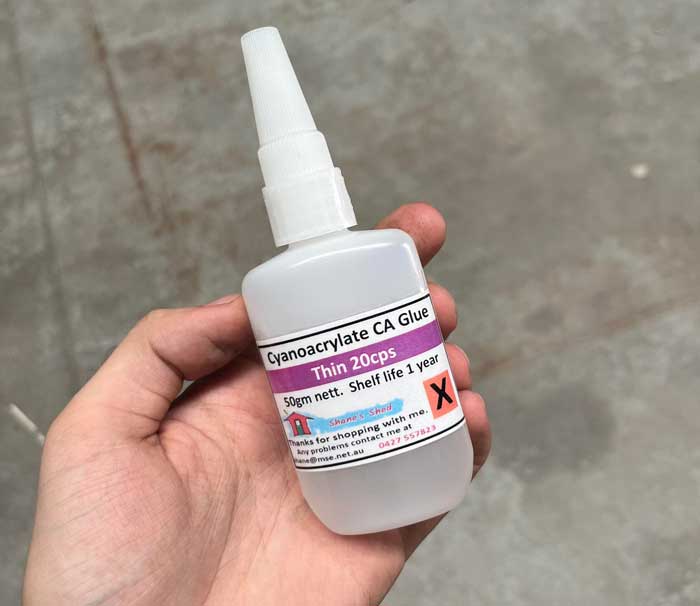
Composition and Application
CA Glue (Cyanoacrylate)
- Composition: Made from cyanoacrylate monomers that polymerize upon contact with moisture.
- Application: Single-component adhesive that hardens quickly when exposed to air, perfect for quick fixes.
Epoxy
- Composition: Consists of a resin and a hardener that must be mixed together to activate the chemical reaction.
- Application: Two-component adhesive offering strong bonding for heavy-duty applications.
Drying Process
CA Glue
- Drying Mechanism: Dries quickly through evaporation and polymerization when exposed to air.
- Time: Can bond within seconds, making it highly efficient for immediate repairs.
Epoxy
- Drying Mechanism: Dries through a chemical reaction between the resin and hardener.
- Time: Takes longer to set compared to CA glue, often requiring several hours to achieve full strength.
Strength and Durability
CA Glue
- Strength: Provides strong bonds but generally exhibits lower shear strength.
- Durability: Less durable under stress compared to epoxy.
Epoxy
- Strength: Offers superior shear strength, capable of handling heavy loads.
- Durability: More durable in harsh conditions, making it ideal for long-term applications.
| Feature | CA Glue (Cyanoacrylate) | Epoxy |
|---|---|---|
| Composition | Single-component adhesive made from cyanoacrylate monomers. | Two-component adhesive consisting of a resin and a hardener. |
| Application | Quick fixes requiring immediate bonding. | Heavy-duty applications needing strong and lasting bonds. |
| Drying Time | Bonds within seconds through evaporation and polymerization when exposed to air. | Takes several hours for the chemical reaction between resin and hardener to complete. |
| Strength | Provides good initial strength but lower shear strength. | Offers high shear strength suitable for demanding applications. |
| Durability | Less durable, suitable for non-porous and light materials. | Highly durable, suitable for various conditions and heavy loads. |
When choosing between CA glue and epoxy, consider the specifics of your project. For quick bonding tasks, CA glue is efficient and easy to use. For more demanding applications requiring strength and long-lasting durability, epoxy stands out. Understanding these distinctions ensures you select the right adhesive for your needs.
Understanding Adhesives: CA Glue and Epoxy
When choosing the right adhesive for your project, understanding the differences between CA glue and epoxy is crucial. Both adhesives offer unique properties that suit various applications. Here’s a breakdown to help you make an well-informed choice:
Key Terms
- CA Glue (Cyanoacrylate): A fast-setting adhesive known for its rapid bonding capabilities.
- Epoxy: A two-part adhesive consisting of a resin and a hardener that provides strength and durability.
Setting Time and Application
- CA Glue: Sets quickly, often within seconds. Ideal for quick repairs where time is a constraint. This rapid setting time can be a disadvantage if precise positioning is necessary.
- Epoxy: Requires a longer curing time, ranging from minutes to hours. This allows for accurate positioning of parts, making it suitable for complex projects.
Strength and Durability
- CA Glue: Forms strong bonds but is less flexible and can be brittle under stress. It’s not ideal for applications where bonded materials may move.
- Epoxy: Offers superior strength and durability. It withstands environmental conditions like temperature fluctuations and moisture, making it suitable for long-term, heavy-duty applications.
Comparison Table
| Property | CA Glue (Cyanoacrylate) | Epoxy |
|---|---|---|
| Setting Time | Seconds | Minutes to Hours |
| Flexibility | Low | High |
| Durability | Moderate | High |
| Environmental Resistance | Low | High |
| Application Ease | Easy | Requires Mixing |
When to Use Each
- CA Glue: Use for quick fixes on non-porous surfaces where speed is essential. Examples include repairing broken ceramics, quick plastic repairs, or attaching small metal parts.
- Epoxy: Opt for epoxy in projects demanding long-lasting bonds and resistance to harsh environments. Examples include structural bonding, automotive repairs, or crafting durable composite materials.
Action Point
Consider the specific requirements of your project, including the materials involved, the need for precision, and the environmental conditions. This understanding ensures you choose the right adhesive for optimal results.
Composition and Properties
Understanding the composition and properties of CA glue and epoxy helps you choose the right adhesive for your project. Both adhesives are popular for their unique capabilities but have distinct characteristics suited for specific applications.
CA Glue Composition
Composition: CA glue, also known as Super Glue, is a single-component adhesive made from cyanoacrylate monomers. It hardens rapidly when exposed to moisture in the air.
Properties:
- Bonding Strength: While CA glue forms a strong bond, it has low shear strength, meaning it resists direct pulling but is susceptible to off-angle stress.
- Application Process: It is a thin, watery liquid that can be used directly from the bottle without mixing. It works best on non-porous materials and requires a tight fit between the parts being bonded.
- Curing Time: CA glue hardens quickly, usually within seconds to minutes depending on environmental conditions and the specific type of CA glue used.
- Removal Methods: You can remove CA glue with acetone or gamma-butyrolactone (GBL), whether it’s in liquid or solid state.
Epoxy Composition
Composition: Epoxy is a two-part adhesive that consists of a resin and a hardener. These components need to be mixed before application, initiating a chemical reaction that forms a strong bond.
Properties:
- Bonding Strength: Epoxy offers superior shear strength, making it ideal for heavy-duty applications that require durability under stress.
- Application Process: Mixing the resin and hardener is crucial before application. This combination must be precise to ensure effective bonding.
- Curing Time: Epoxy generally takes several hours to set. This slower curing time allows for adjusting and repositioning parts before the bond is fully set.
- Removal Methods: Unlike CA glue, removing cured epoxy is more challenging and usually requires mechanical means like sanding or specialized solvents.
Comparison Table
| Property | CA Glue | Epoxy |
|---|---|---|
| Composition | Single-component, cyanoacrylate | Two-part, resin and hardener |
| Bonding Strength | High bond, low shear strength | Superior shear strength |
| Application | Direct from bottle, no mixing | Requires precise mixing |
| Curing Time | Seconds to minutes | Several hours |
| Removal | Acetone, gamma-butyrolactone | Mechanical removal, specialized solvents |
Summary
Choose CA glue for quick fixes on non-porous materials where a fast bond is essential. Opt for epoxy for projects needing a durable, strong bond that can withstand stress. Both adhesives have unique benefits, making them suitable for different types of applications. Review your project’s specific needs to select the right adhesive for optimal results.
Key Uses and Applications
Explore the varied applications of CA glue and epoxy, two versatile adhesives suited to different needs based on their unique properties. Understanding these applications helps you choose the right adhesive for specific projects.
Common Applications of CA Glue
Speed and Instant Bonding: CA glue sets in seconds. Use it for quick assembly projects, such as minor repairs and emergencies, where rapid bonding is a priority.
Small Gaps and Surfaces: Ideal for bonding small, smooth surfaces with minimal gaps. For example, it’s great for adhering non-porous materials like plastic or metal parts.
Hinges and Small Parts: Perfect for installing CA hinges and bonding small parts due to its fast-setting nature. Model makers often use it to attach delicate pieces securely.
Emergency Repairs: A go-to for fast fixes, thanks to its strong initial hold. CA glue comes in handy for urgent repairs, from broken ceramic items to quick fixes on furniture.
Common Applications of Epoxy
High-Strength Bonds: Epoxy offers strong, durable bonds capable of withstanding significant shear and peel stress. Use it in applications requiring high strength and durability, such as structural repairs.
Large Surface Areas and Fill Gaps: Ideal for covering large areas and filling gaps. For example, it’s commonly used to bond wood, metal, and concrete in construction or repair projects.
Environmental Resistance: Epoxy resists harsh conditions, including moisture, chemicals, and temperature fluctuations. Use it for outdoor projects and applications exposed to extreme environments.
Customization and Versatility: With the ability to mold and shape the adhesive during the curing process, epoxy can be customized for specific needs, such as creating durable coatings or encapsulating electronic components.
| Feature | CA Glue | Epoxy |
|---|---|---|
| Setting Time | Sets in seconds | Takes several hours to set |
| Strength | Initial strong hold, lower long-term strength | High shear and peel strength, durable |
| Gap Filling | Minimal gap filling | Fills large gaps |
| Environmental Resistance | Moderate resistance | High resistance to moisture, chemicals, temperature |
| Application Areas | Small, smooth surfaces, quick repairs | Structural repairs, large surfaces, outdoor projects |
| Removal | Can be removed with acetone | Typically requires mechanical removal |
Understanding these key metrics helps you select the appropriate adhesive for your specific needs, ensuring optimal results in your projects.
Strength and Durability
Examining the strength and durability of CA glue and epoxy helps you choose the best adhesive for your project needs.
CA Glue Strength and Durability
- Bond Strength: CA (Cyanoacrylate) glue creates strong bonds, but they are generally less durable and more brittle than epoxy. This brittleness causes CA glue bonds to break under stress or impact.
- Flexibility: CA glue bonds lack flexibility, leading to cracking and failure under stress or vibration.
- Environmental Resistance: CA glue is less resistant to environmental conditions such as temperature changes and chemicals compared to epoxy.
- Application: Ideal for quick bonding, such as installing CA hinges or filling small gaps. But, it is not suited for applications needing high strength and durability.
Epoxy Strength and Durability
- Bond Strength: Epoxy forms very strong and durable bonds that can withstand significant shear and peel stress.
- Flexibility: Epoxy bonds exhibit higher flexibility, which helps them endure stress and vibration without failing.
- Environmental Resistance: Epoxy offers superior resistance to temperature changes, chemicals, and other harsh environmental conditions.
- Application: Suitable for high-strength requirements, large surface areas, and projects needing environmental resistance.
| Feature | CA Glue | Epoxy |
|---|---|---|
| Bond Strength | Strong but brittle | Very strong and durable |
| Flexibility | Low, prone to cracking | High, withstands stress and vibration |
| Environmental Resistance | Less resistant to temperature, chemicals | Highly resistant |
| Application | Quick fixes, small gaps | High-strength, large surfaces |
Understanding these differences helps you choose the right adhesive based on your specific project requirements for strength and durability.
Setting and Curing Times
Understanding setting and curing times helps you choose the appropriate adhesive for specific applications. Here’s how CA glue and epoxy compare in these aspects.
CA Glue Setting Time
CA (Cyanoacrylate) glue sets rapidly due to its chemical composition:
- Initial Setting Time: Typically hardens within seconds to a few minutes.
- Mechanism: Polymerizes quickly upon contact with moisture.
The speed at which CA glue sets makes it ideal for quick fixes and emergency repairs on non-porous surfaces. This attribute means you can expedite small projects or repairs efficiently.
Epoxy Curing Time
Epoxy’s curing time is more variable due to its two-component nature:
- Components: Requires mixing resin and hardener.
- Fast-Setting Epoxy: Can cure within 5-15 minutes.
- Standard Epoxy: May take several hours to fully cure, providing a stronger bond.
Epoxy’s longer curing time allows for adjustments during the initial stages, making it suitable for projects requiring precise alignment and robust adhesion. This flexibility benefits applications needing structural integrity over time.
Comparison Table
The following table highlights the setting and curing times for both adhesives under different conditions:
| Adhesive Type | Initial Setting Time | Full Curing Time | Strength |
|---|---|---|---|
| CA Glue | Seconds to few minutes | Minutes to full cure | Strong, but less durable |
| Fast-Setting Epoxy | 5-15 minutes | 30 minutes to an hour | Moderate strength |
| Standard Epoxy | 30 minutes to an hour | 24 hours or more | Very high strength |
Using this information, you can select the right adhesive based on your project’s timescale and strength requirements.
Adhesion to Various Materials
Understanding how CA glue and epoxy adhere to different materials helps you select the appropriate adhesive for your projects.
CA Glue Adhesion
CA glue, known for rapid curing, excels at quick assembly and bonding small parts. This adhesive hardens quickly upon air exposure, making it ideal for fast repairs.
Speed and Application
CA glue’s rapid curing is beneficial for applications requiring immediate bonding. It’s particularly effective on plastics, metals, and other non-porous materials. For instance, you can use CA glue to quickly fix a broken plastic toy or metal jewelry.
- Rapid Curing Time: Bonds within seconds to a few minutes.
- Ideal For: Quick fixes, crafting, and small part assemblies.
- Effective On: Plastics, metals, glass, and non-porous surfaces.
Material Compatibility
While CA glue works perfectly on smooth surfaces, it’s less effective on porous materials.
- Smooth Surfaces: Works well on plastics, metals, glass.
- Porous Materials: Less effective on wood due to shallow penetration.
Epoxy Adhesion
Epoxy offers superior bonding strength and is suitable for demanding applications. This adhesive requires mixing resin with a hardener, which provides a strong and durable bond.
Strength and Durability
Epoxy’s strength and durability make it ideal for heavy-duty projects.
- Mixing Required: Resin and hardener must be combined.
- Curing Time: Varies; fast-setting epoxy cures in 5-15 minutes, while standard epoxy takes several hours.
- Ideal For: High-strength bonds, large surface areas, gap filling.
- Effective On: Metals, woods, plastics, ceramics.
Versatility in Application
Epoxy’s versatility allows it to be used on both porous and non-porous materials. For example, you can use epoxy to bond wood and metal parts in furniture assembly.
- Porous Surfaces: Deep penetration provides strong bonds.
- Non-Porous Surfaces: Creates durable, resistant bonds.
| Feature | CA Glue | Epoxy |
|---|---|---|
| Curing Time | Seconds to minutes | 5-15 minutes (fast-setting) Several hours (standard) |
| Ideal For | Quick fixes, small parts | High-strength bonds, large areas, gap filling |
| Material Compatibility | Non-porous surfaces | Both porous and non-porous surfaces |
| Application Method | Ready to use, no mixing | Requires mixing resin and hardener |
Summary: For quick, small repairs, choose CA glue. For strong, durable bonds on varied surfaces, go with epoxy.
Pros and Cons
When choosing between CA glue and epoxy, you must understand their strengths and weaknesses. This section explores the pros and cons of each adhesive to help you make an well-informed choice.
Pros and Cons of CA Glue
Pros:
- Speed of Assembly: CA glue dries within seconds to minutes, making it ideal for rapid and precise applications.
- Ease of Use: Minimal preparation is required, making it easier to apply than epoxy.
- Clear Finish: Dries clear, perfect for applications where appearance matters.
- Cost-Effective: Generally cheaper than epoxy.
Cons:
- Shear Strength: Offers lower shear strength; unsuitable for high structural integrity requirements.
- Limited Flexibility: Lacks flexibility once set, a drawback in applications needing movement.
- Environmental Sensitivity: More sensitive to temperature and humidity, impacting performance.
Pros and Cons of Epoxy
Pros:
- High Structural Strength: Offers superior shear strength, making it suitable for demanding applications.
- Durability: More resistant to environmental conditions like temperature changes and chemicals.
- Versatility: Bonds well with both porous and non-porous materials.
- Gap-Filling: Can fill larger gaps, making it versatile for various repairs and constructions.
Cons:
- Longer Setting Time: Takes several hours to fully cure, limiting its use for immediate repairs.
- Preparation Time: Requires precise mixing of resin and hardener, complicating the application process.
- Cost: Generally more expensive than CA glue.
| Feature | CA Glue | Epoxy |
|---|---|---|
| Setting Time | Seconds to minutes | Several hours |
| Ease of Use | Easy, minimal preparation | Requires mixing |
| Finish | Dries clear | May vary (clear or opaque) |
| Shear Strength | Lower | Higher |
| Flexibility | Low | High |
| Environmental Sensitivity | High sensitivity | Low sensitivity |
| Cost | Cheaper | More expensive |
| Versatility | Best for non-porous materials | Good for both non-porous and porous |
This table helps you compare essential features of CA glue and epoxy, aiding in the selection based on specific needs.
Environmental and Safety Considerations
When comparing cyanoacrylate (CA) glue and epoxy, environmental and safety considerations are critical.
Chemical Composition and Safety
Cyanoacrylate (CA) Glue
- Toxicity and Irritation: CA glue, known as super glue, is made from cyanoacrylate monomers that polymerize upon contact with moisture. Toxicity may occur if fumes are inhaled, and it can cause skin irritation. CA glue is flammable, so keep it away from heat sources.
- Handling: CA glue is easier to handle due to its single-component nature. But, you must avoid skin contact and inhalation of fumes. Proper ventilation is crucial, especially during extensive use.
Epoxy
- Toxicity and Irritation: Epoxy consists of a resin and a hardener, and mixing these components can release harmful fumes. These fumes can cause skin and eye irritation. Resin and hardening agents are particularly caustic and must be handled with care.
- Handling: Working with epoxy demands more caution. It requires mixing before application, introducing additional steps in handling. Use gloves and protective eyewear to reduce skin contact and the risk of irritation.
Comparison Table: Chemical Safety Profiles
| Adhesive | Toxicity | Irritation | Handling Requirements |
|---|---|---|---|
| CA Glue | High toxicity if inhaled | Can cause skin irritation | Single component, avoid fumes and skin contact |
| Epoxy | Harmful fumes when mixed | Can cause skin and eye irritation | Requires mixing, use protective gear |
Environmental Impact
Understanding the environmental impact of these adhesives helps in making informed choices.
Cyanoacrylate (CA) Glue
- Biodegradability: CA glue is not biodegradable, so disposal requires specific considerations to avoid environmental harm.
- Carbon Footprint: Manufacturing CA glue generates a higher carbon footprint due to its chemical processes.
Epoxy
- Biodegradability: Epoxy is also non-biodegradable. Improper disposal can contribute to long-term environmental damage.
- Carbon Footprint: The production of epoxy involves processes that can be resource-intensive, contributing to a significant carbon footprint.
Comparison Table: Environmental Impact
| Adhesive | Biodegradability | Carbon Footprint |
|---|---|---|
| CA Glue | Non-biodegradable | Higher due to chemical processes |
| Epoxy | Non-biodegradable | Significant, resource-intensive processes |
Safety Precautions
Adhering to safety precautions ensures personal safety and minimizes environmental impact.
General Safety Tips
- Ventilation: Ensure good ventilation when using either adhesive.
- Protective Gear: Wear gloves, safety goggles, and masks to prevent direct contact and inhalation of fumes.
- Storage: Store adhesives in a cool, dry place away from heat and direct sunlight.
Disposal Methods
Proper disposal reduces environmental harm.
Cyanoacrylate (CA) Glue
- Small Quantities: Cure the glue by letting it harden before disposing of it with household waste.
- Large Quantities: Contact local hazardous waste disposal facilities for guidance.
Epoxy
- Curing: Mix and allow the epoxy to cure fully before disposal.
- Local Regulations: Check local regulations for disposal options, especially for large quantities.
Summary
Environmental and safety considerations are essential when choosing between CA glue and epoxy. CA glue, while easier to handle, presents toxicity risks and a modest environmental footprint. Epoxy offers strong adhesives but comes with higher handling and environmental concerns. Proper safety precautions and disposal methods can mitigate the risks associated with both adhesives.
Cost and Availability
Understanding the cost and availability of CA glue and epoxy is essential for making an informed choice. Both adhesives offer unique properties, but their pricing and accessibility vary significantly.
Cost
- CA Glue: Generally more expensive than epoxy, a small bottle of CA glue costs around $12. If an accelerator is needed, it can add another $16 to the total cost.
- Epoxy: Typically, epoxy adhesives are more affordable, especially for larger applications. Their cost is about one-fourth that of CA glue.
Availability
- CA Glue: Widely available in various viscosities (thin, medium, thick), you can find CA glue in hardware stores, craft shops, and online retailers. It’s popular for hobby and household applications.
- Epoxy: Epoxy adhesives are also widely accessible. Available in one-part and two-part systems, you can purchase them in hardware stores, home improvement stores, and online. Epoxy is versatile, suitable for woodworking, electronics, and metalwork.
| Adhesive | Average Cost | Availability | Typical Uses |
|---|---|---|---|
| CA Glue | $12 per small bottle + $16 for accelerator | Hardware stores, craft shops, online retailers | Hobby projects, small household repairs |
| Epoxy | About one-fourth the cost of CA glue | Hardware stores, home improvement stores, online retailers | Woodworking, electronics, metalwork |
Knowing the cost and availability of CA glue and epoxy helps you choose the right adhesive for your needs. If immediate, quick fixes are essential, CA glue is a suitable option even though its higher price. For larger, more intensive applications, epoxy offers a cost-effective solution.
Conclusion
Choosing between CA glue and epoxy eventually depends on your project’s specific needs. If you need a quick fix on non-porous surfaces, CA glue’s rapid bonding and ease of use make it an excellent choice. For more demanding applications requiring strength and durability, epoxy’s superior bonding capabilities and resistance to harsh conditions are unmatched.
Remember to consider the setting times, material compatibility, and environmental resistance when selecting your adhesive. Both CA glue and epoxy have their unique advantages and limitations, so understanding these differences will help you make an well-informed choice and achieve the best results for your projects.
Frequently Asked Questions
What is the key difference between CA glue and epoxy?
CA glue (super glue) is known for its quick bonding and ease of use, ideal for small, non-porous surface repairs. Epoxy, on the other hand, consists of a resin and a hardener that must be mixed, providing strong, durable bonds suitable for heavy-duty applications.
Which adhesive is better for quick fixes?
CA glue is better for quick fixes due to its rapid setting time. It bonds within seconds to a few minutes, making it ideal for small, urgent repairs.
How does the strength of CA glue compare to epoxy?
CA glue offers good initial strength but lacks shear strength and flexibility, making it less durable under stress. Epoxy provides superior shear strength and durability, making it suitable for long-term, heavy-duty applications.
Can CA glue be used on porous materials like wood?
CA glue is less effective on porous materials such as wood. Epoxy is more versatile and can effectively bond both porous and non-porous materials.
How should CA glue and epoxy be removed?
CA glue can be removed with acetone. For cured epoxy, mechanical removal, such as sanding or scraping, is typically required.
What are the main safety considerations when using CA glue and epoxy?
CA glue can cause skin irritations and is flammable, while epoxy can release harmful fumes and requires careful handling. Proper safety precautions, such as wearing gloves and working in well-ventilated areas, are advised.
Is there a significant cost difference between CA glue and epoxy?
Yes, CA glue is generally more expensive, with a small bottle costing around $12. Epoxy is typically more cost-effective, about one-fourth the price of CA glue.
How long does it take for epoxy to fully cure?
The curing time for epoxy varies: fast-setting epoxy cures in 5-15 minutes, while standard epoxy can take several hours to fully cure.
Can epoxy provide environmental resistance?
Yes, epoxy forms durable bonds that are highly resistant to temperature changes, chemicals, and environmental conditions, making it suitable for long-term projects.
What are the disadvantages of using CA glue?
CA glue has lower shear strength, limited flexibility, and less environmental resistance compared to epoxy. It can also bond skin rapidly and is sensitive to moisture.

